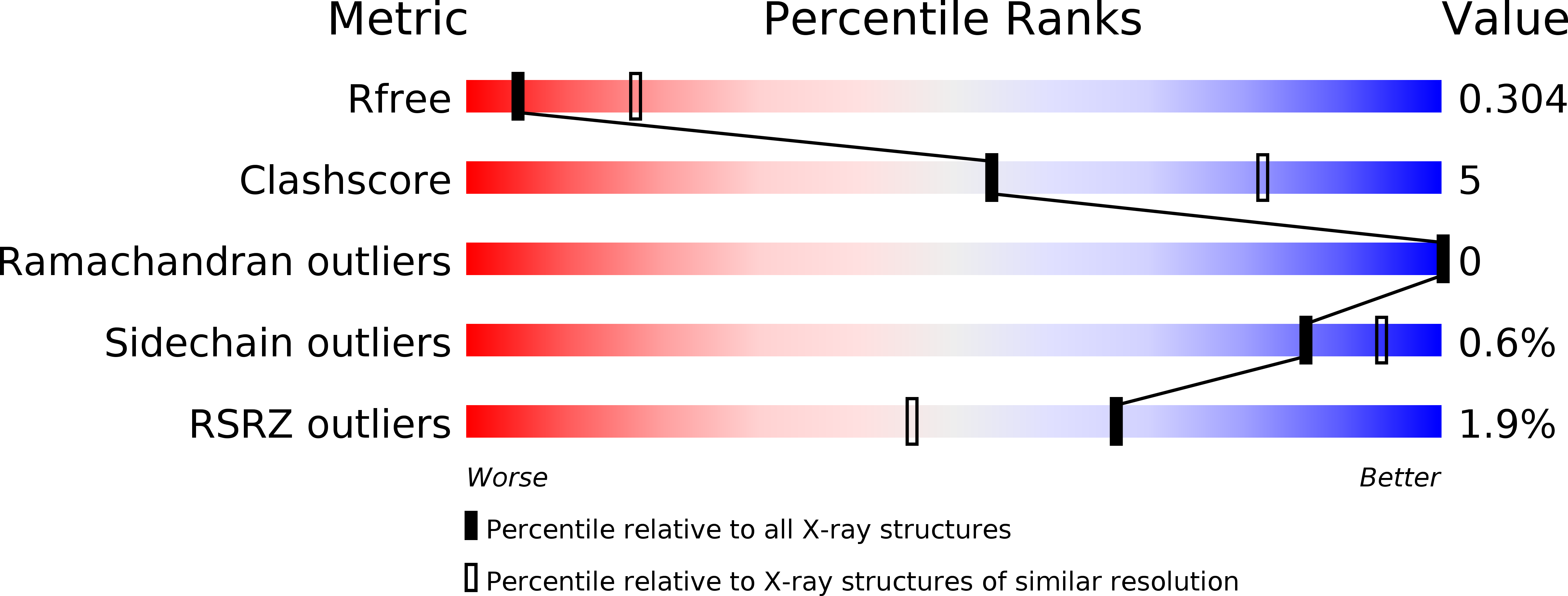Structure, Dynamics and Cellular Insight Into Novel Substrates of theLegionella pneumophilaType II Secretion System.
Portlock, T.J., Tyson, J.Y., Dantu, S.C., Rehman, S., White, R.C., McIntire, I.E., Sewell, L., Richardson, K., Shaw, R., Pandini, A., Cianciotto, N.P., Garnett, J.A.(2020) Front Mol Biosci 7: 112-112
- PubMed: 32656228
- DOI: https://doi.org/10.3389/fmolb.2020.00112
- Primary Citation of Related Structures:
6SJT, 6SKW, 6XTT - PubMed Abstract:
Legionella pneumophila is a Gram-negative bacterium that is able to replicate within a broad range of aquatic protozoan hosts. L. pneumophila is also an opportunistic human pathogen that can infect macrophages and epithelia in the lung and lead to Legionnaires' disease. The type II secretion system is a key virulence factor of L. pneumophila and is used to promote bacterial growth at low temperatures, regulate biofilm formation, modulate host responses to infection, facilitate bacterial penetration of mucin gels and is necessary for intracellular growth during the initial stages of infection. The L. pneumophila type II secretion system exports at least 25 substrates out of the bacterium and several of these, including NttA to NttG, contain unique amino acid sequences that are generally not observed outside of the Legionella genus. NttA, NttC, and NttD are required for infection of several amoebal species but it is unclear what influence other novel substrates have within their host. In this study, we show that NttE is required for optimal infection of Acanthamoeba castellanii and Vermamoeba vermiformis amoeba and is essential for the typical colony morphology of L. pneumophila . In addition, we report the atomic structures of NttA, NttC, and NttE and through a combined biophysical and biochemical hypothesis driven approach we propose novel functions for these substrates during infection. This work lays the foundation for future studies into the mechanistic understanding of novel type II substrate functions and how these relate to L. pneumophila ecology and disease.
Organizational Affiliation:
Centre for Host-Microbiome Interactions, Dental Institute, King's College London, London, United Kingdom.















